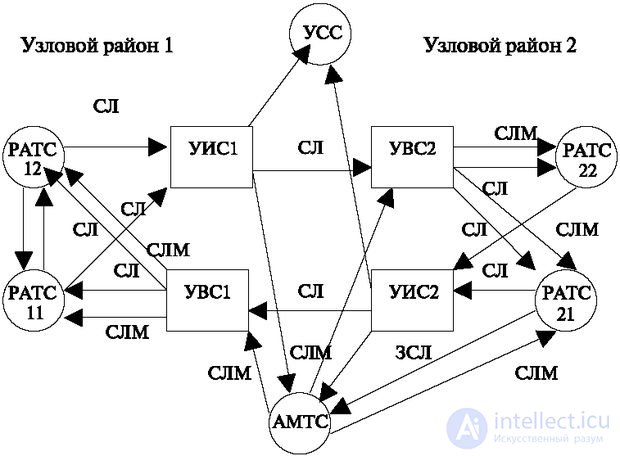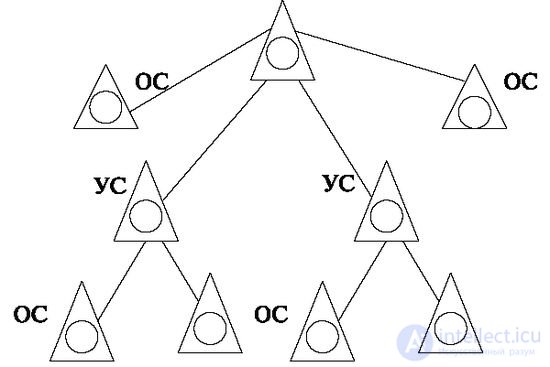Lecture
Annotation: The principles of building public networks - urban, long-distance, rural, the parameters of these networks and the principles of network management are given.
The topic of this lecture is currently the most difficult, because at the moment (precisely the moment, not the time), the network is changing.
Therefore, everything that will be described below cannot be attributed to the networks of the near future. It only prepares for understanding the further development of the network.
But we will proceed from some provisions (axioms).
Currently, the public network retains its leadership. Therefore it is necessary to know this network. But it is currently changing significantly. One such significant change is the numbering system.
This course examines in detail the existing public network and its associated intelligent network and signaling network, as well as subsystems that support the operation of these networks — synchronization and routing. The telecommunications management network (TMN) is discussed in "Maintenance, Operation and Administration of Stations, Telecommunications Management Network (TMN)".
Network based on TCP / IP protocols should be studied from the previous book. It also provides the necessary information on the means of multimedia that prepare the reader to the perception of "new generation networks" - NGN.
Below are considered only the general provisions of the network NGN.
Mobile network devoted separate book [11].
Linear - cable (primary networks were considered in the previous sections (see "Transmission of linear and control signals")
Telephone networks are a set of terminal devices (terminals) of telephone exchanges, lines and channels of the telephone network, transit switching nodes [1, 65].
The initial phase of building a communication network is characterized by a fully accessible configuration, when each station communicates with another telephone exchange on the principle of “each with each” (Fig. 8.1).

This type of network was recommended for networks of up to 80,000 numbers. Their disadvantages are obvious:
C 10 2 = 45.
Given the need for two-way communication, this may require 45 outgoing and 45 incoming connections (which once again reminds of the advantages of ACS, which provides two-way communication).
As seen in fig. 8.2, in each one hundred thousandth region, an Incoming Message Node (UAS) is established, where the load from the entire network arrives. There can be up to 8 such nodes on a millionth network. Incoming messages are then distributed to stations in a given area. Thus, a network of 800,000 numbers with six-digit numbering is organized. Attention should be paid to the numbering of the nodes, which shows the station belonging to one of the nodal areas.
Large networks are constructed using Incoming and Outgoing Message Nodes [28], as shown in Fig. 8.2.

The territory of the city is divided into hundred-thousandth areas, the number of which can be up to eighty (two are shown in the figure). In each area, an incoming message node (DPS) and an outgoing message node (MIS) are organized. Outgoing messages of subscribers of this area are received at the MIS of each district. The UIS connects with all the DPS of other areas. In accordance with the dialed number, he commutes the message to one of the DPS. Thus, there is a concentration of load from individual stations.
At least one Reference Service Node (OSS) and one Automatic Long-Distance Telephone Station (AMTS) must be located on such a network. In some telephone networks, in order to provide smaller losses for long-distance connections, bundles of lines (channels) reserved only for long-distance communication (SLM - Long-distance Interconnecting Lines) are allocated. Much less often, similar beams are allocated for outgoing long-distance communication mainly for communication with long-distance network operators (ZSL - Custom-Connecting Lines).
Also on large networks a special services unit is created (police, ambulance and others). A station that performs this role must be designed for many connections with a short duration, which is often difficult, since in such a situation the control devices are loaded significantly more than at a regular station.
For the rural network is characterized by a small specific concentration of subscribers. Concentrating stations are usually located in large villages, and the problem is that the installation of small stations is necessary, and the station concentrating the load must have terminal capacity and at the same time be transit.

On the rural network, the following types of stations are distinguished (Fig. 8.3).
Node stations (CSS). With a certain density of subscribers, nodes are installed (purely transit stations) that concentrate the load from the terminal stations. They are included in the central station. The rural network is built by zones, each zone is designed for servicing 100 thousand subscribers. If necessary, the Central Station is connected by connecting lines with the urban nodes. In this case, it is said that it plays the role of the node of the rural-suburban communication (USP) [21, 42].
Comments
To leave a comment
Telecommunication Services and Devices
Terms: Telecommunication Services and Devices